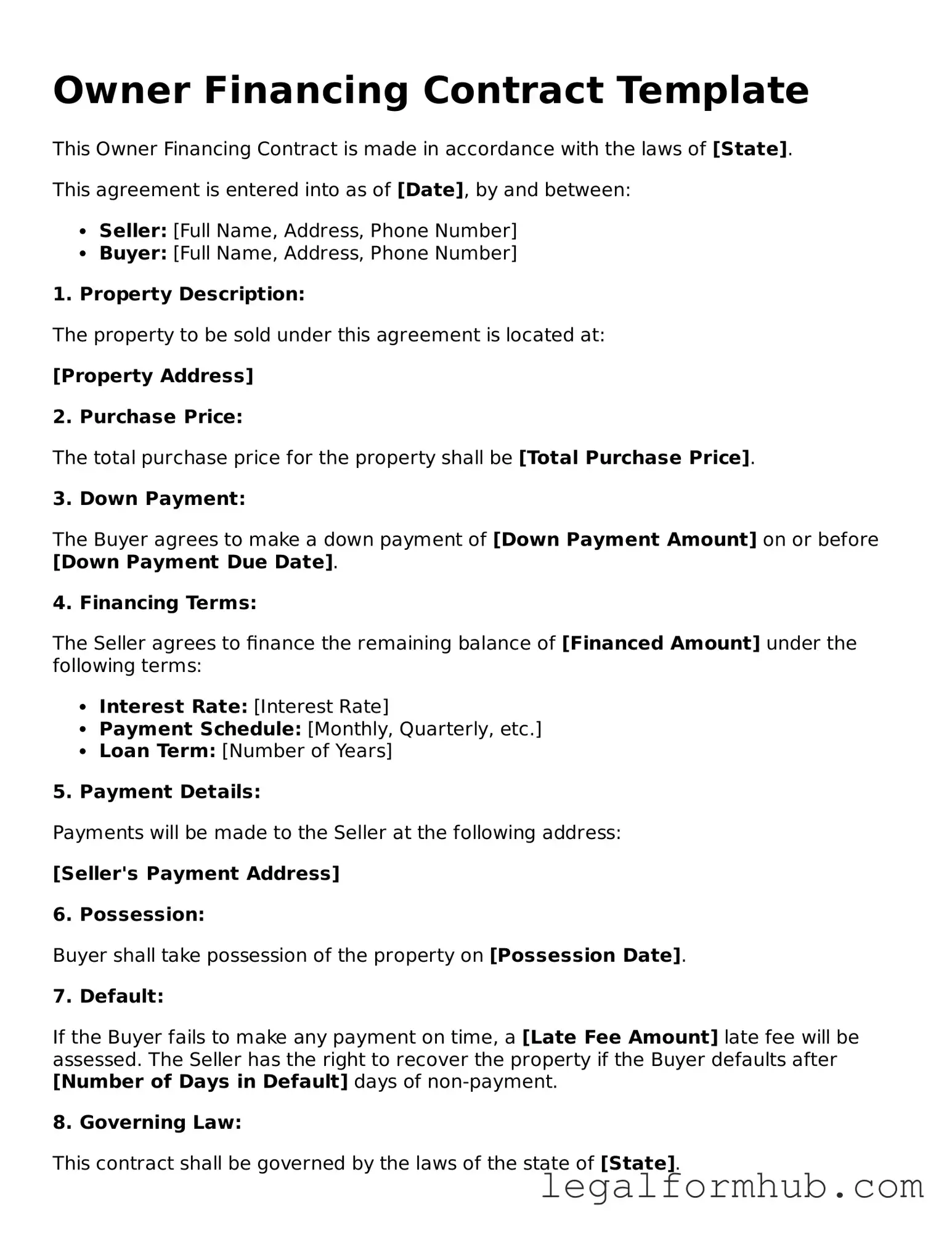The Owner Financing Contract is similar to a Mortgage Agreement. In both documents, the buyer borrows money from the seller to purchase a property. The Mortgage Agreement typically involves a lender and includes terms for repayment, interest rates, and consequences for default. In contrast, the Owner Financing Contract allows the seller to directly finance the purchase, often making it easier for buyers who may not qualify for traditional loans.
Another document that shares similarities is the Lease Purchase Agreement. This agreement allows a tenant to rent a property with the option to buy it later. Like the Owner Financing Contract, it provides a pathway to homeownership without requiring immediate full payment. Both documents outline the terms of payment and the responsibilities of each party, making them appealing to buyers who need time to secure financing.
A Land Contract, also known as a Contract for Deed, resembles the Owner Financing Contract in that it allows the buyer to make payments directly to the seller. In this arrangement, the seller retains the title until the buyer fulfills the payment obligations. This method can be beneficial for buyers who may struggle to obtain conventional financing, as it simplifies the transaction process.
The Promissory Note is another related document. While the Owner Financing Contract outlines the terms of the sale and financing, the Promissory Note serves as a promise from the buyer to repay the loan. It details the amount borrowed, the interest rate, and the repayment schedule. Together, these documents create a clear framework for both parties regarding the financial aspects of the transaction.
A Purchase Agreement is also similar, as it outlines the terms and conditions of a property sale. While the Owner Financing Contract specifically addresses how the buyer will finance the purchase, the Purchase Agreement covers the overall sale, including price, contingencies, and closing details. Both documents are essential in ensuring that the transaction proceeds smoothly and that both parties understand their obligations.
The Owner Financing Contract shares similarities with a Purchase Agreement, which is a foundational document in real estate transactions. Both documents outline the terms under which a sale occurs, detailing the purchase price, contingencies, and obligations of each party. However, while the Purchase Agreement is typically used when a buyer is securing traditional financing, the Owner Financing Contract specifically addresses scenarios where the owner provides the financing, allowing buyers to pay the seller directly over time. For more information on the legal documents used in these transactions, visit Fill PDF Forms.
The Seller Financing Addendum is closely related as well. This document can be attached to a standard Purchase Agreement to specify that the seller will finance part of the purchase price. It clarifies the terms of the financing arrangement, including payment amounts and timelines, similar to what is outlined in the Owner Financing Contract.
A Short Sale Agreement shares some common ground, particularly when a homeowner sells their property for less than what is owed on the mortgage. In situations where owner financing is involved, the seller may agree to finance the difference. Both documents require careful negotiation and understanding of the financial implications for all parties involved.
The Assignment of Contract is another document that can be relevant. It allows one party to transfer their rights and obligations under a contract to another party. If a buyer in an Owner Financing Contract wishes to assign their rights to a third party, this document would be necessary. It ensures that all parties are aware of the changes and that the financing terms remain intact.
Finally, a Real Estate Purchase Agreement is similar in that it formalizes the sale of property. While the Owner Financing Contract focuses on the financing aspect, the Real Estate Purchase Agreement includes all terms of the sale, such as the purchase price and closing date. Both documents are crucial in ensuring that the transaction is legally binding and that the interests of both the buyer and seller are protected.
